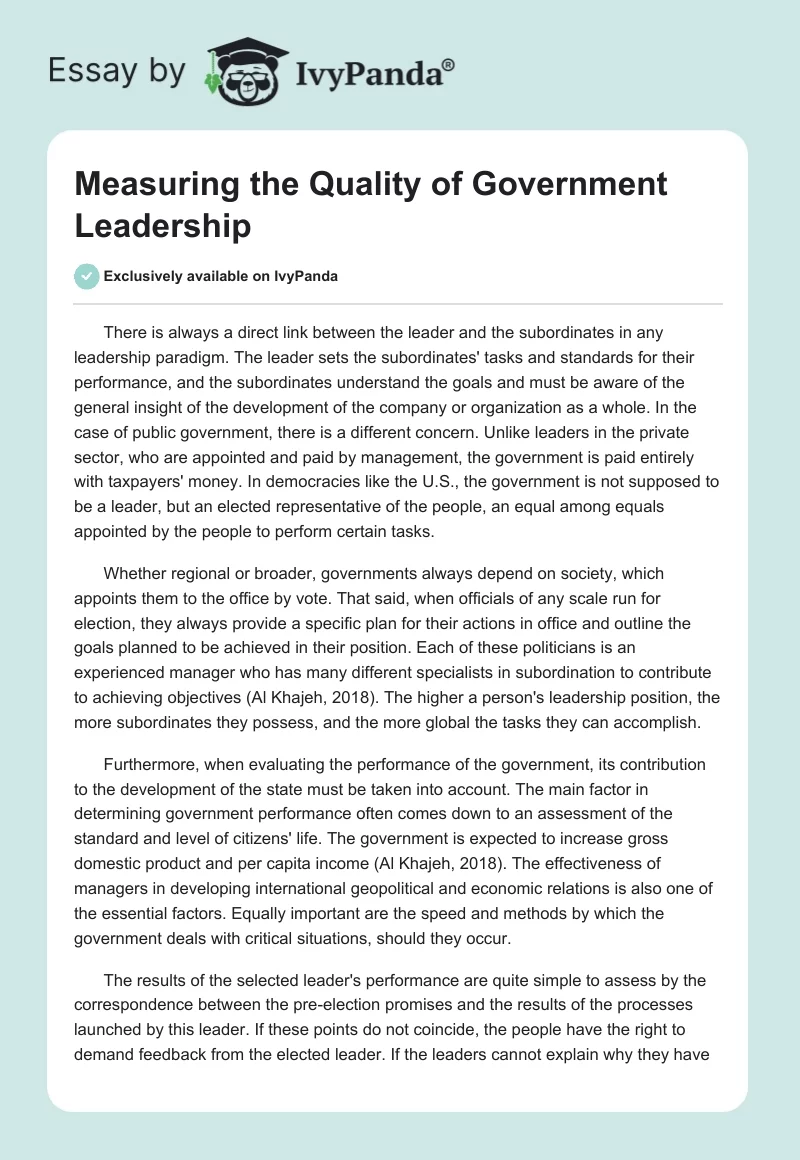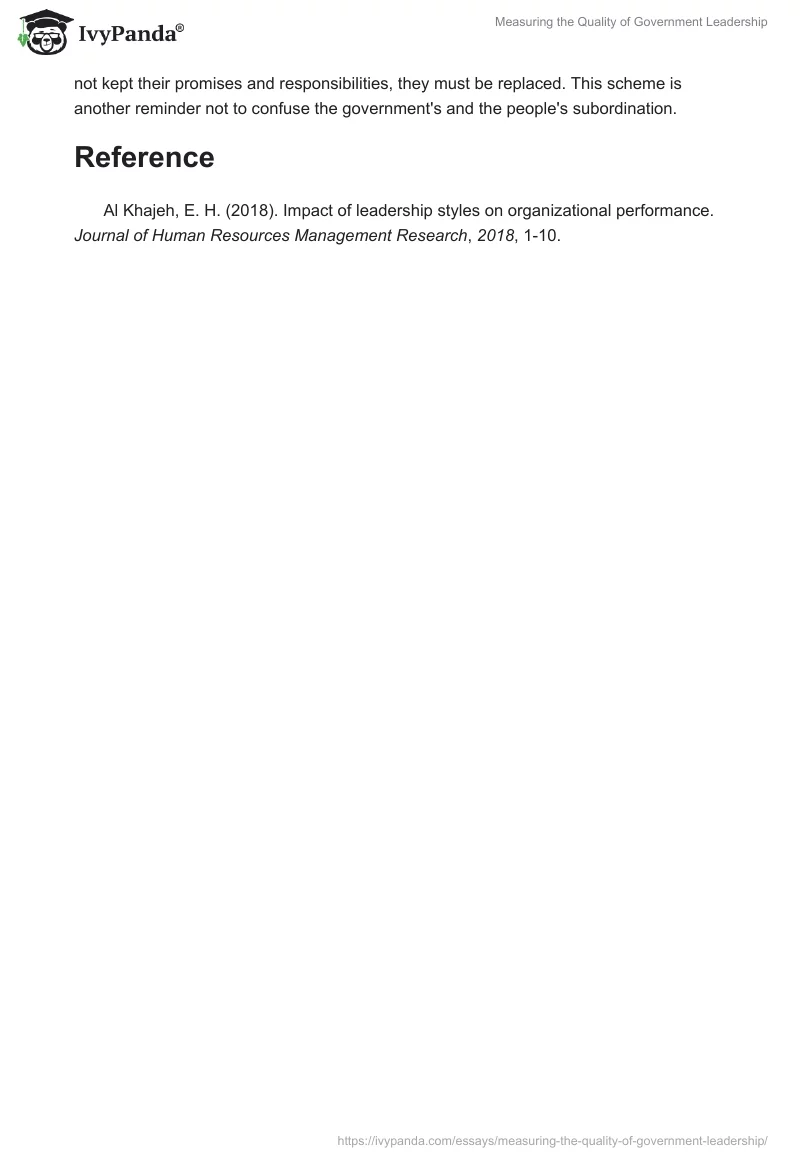There is always a direct link between the leader and the subordinates in any leadership paradigm. The leader sets the subordinates’ tasks and standards for their performance, and the subordinates understand the goals and must be aware of the general insight of the development of the company or organization as a whole. In the case of public government, there is a different concern. Unlike leaders in the private sector, who are appointed and paid by management, the government is paid entirely with taxpayers’ money. In democracies like the U.S., the government is not supposed to be a leader, but an elected representative of the people, an equal among equals appointed by the people to perform certain tasks.
Whether regional or broader, governments always depend on society, which appoints them to the office by vote. That said, when officials of any scale run for election, they always provide a specific plan for their actions in office and outline the goals planned to be achieved in their position. Each of these politicians is an experienced manager who has many different specialists in subordination to contribute to achieving objectives (Al Khajeh, 2018). The higher a person’s leadership position, the more subordinates they possess, and the more global the tasks they can accomplish.
Furthermore, when evaluating the performance of the government, its contribution to the development of the state must be taken into account. The main factor in determining government performance often comes down to an assessment of the standard and level of citizens’ life. The government is expected to increase gross domestic product and per capita income (Al Khajeh, 2018). The effectiveness of managers in developing international geopolitical and economic relations is also one of the essential factors. Equally important are the speed and methods by which the government deals with critical situations, should they occur.
The results of the selected leader’s performance are quite simple to assess by the correspondence between the pre-election promises and the results of the processes launched by this leader. If these points do not coincide, the people have the right to demand feedback from the elected leader. If the leaders cannot explain why they have not kept their promises and responsibilities, they must be replaced. This scheme is another reminder not to confuse the government’s and the people’s subordination.
Reference
Al Khajeh, E. H. (2018). Impact of leadership styles on organizational performance. Journal of Human Resources Management Research, 2018, 1-10.


